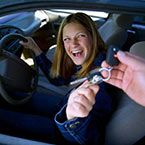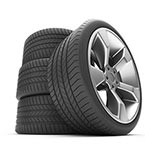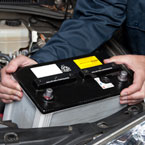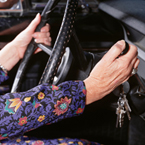 Since the late 1980s, the Honda Accord has been one of the best-selling cars in North America. Nine generations later, the Accord is still going strong, and the 2014 production model retains the body shape that car buyers first saw in 2012. Part of that popularity stems from being able to offer a range of different models to appeal to different drivers. As more and more consumers become motivated to adopt greener driving habits, car manufacturers have to respond. For 2014, the Honda Accord offers a hybrid option that caters for these environmentally friendly drivers. Read on for an overview of the new 2014 Honda Accord Hybrid from our team at DCH Academy Honda. Since the late 1980s, the Honda Accord has been one of the best-selling cars in North America. Nine generations later, the Accord is still going strong, and the 2014 production model retains the body shape that car buyers first saw in 2012. Part of that popularity stems from being able to offer a range of different models to appeal to different drivers. As more and more consumers become motivated to adopt greener driving habits, car manufacturers have to respond. For 2014, the Honda Accord offers a hybrid option that caters for these environmentally friendly drivers. Read on for an overview of the new 2014 Honda Accord Hybrid from our team at DCH Academy Honda.
The manufacturer only released news of the 2014 Honda Accord Hybrid in June 2013, and some details are as yet unknown. The model will go on sale in October 2013, with pricing announced closer to the release.
The Honda Accord hybrid will share the same two-motor hybrid power train as its plug-in hybrid counterpart. This means that it will offer different driving options. In EV Drive mode, the lithium-ion battery will allow the car to operate at low to medium cruising speeds without using any gasoline at all. Engine Drive mode sends the power directly to the front wheels. Hybrid drive combines the124-kilowatt electric motor with the 2-liter 4-cylinder engine for a true hybrid drive. Honda estimates that the 2014 Accord hybrid will be able to offer 49 miles per gallon* in the city. It’s easy to see why this option will appeal to drivers concerned about the rise in gas prices.
Of course, the benefit of a hybrid model of this nature is that it can also offer the features and specifications of the rest of the range, and the 2014 Accord is an attractive proposition. The interior is well-appointed, and the hybrid model is set to have some bespoke hybrid styling touches. The hybrid model will, of course, share the same body styling and construction as the rest of the range, which will include the full range of Accord safety options. This includes Advanced Compatibility Engineering (ACE) and new SmartVent™ front-side airbags. Driving a hybrid car clearly doesn’t mean that drivers must compromise in other ways.
The Accord Hybrid also combines technology with practicality. Available features on the new model will include an 8-inch color display, seven-speaker audio system, Bluetooth, and a multi-angle rear view camera.
The good news is that unlike the plug-in hybrid, which went on sale in January 2013, the Accord Hybrid will be available across the United States. Dealers will be able to sell the model from October 2013, and the car looks set to see huge demand.
*Preliminary mileage ratings determined by Honda. Final EPA mileage ratings not available at time of printing. Use for comparison purposes only. Your actual mileage will vary depending on how you drive and maintain your vehicle.
 We at DCH Academy Honda are pleased to announce that three DCH Auto Group dealerships were recently named to Automotive News’ annual list of the Top 100 Dealerships to Work For. We at DCH Academy Honda are pleased to announce that three DCH Auto Group dealerships were recently named to Automotive News’ annual list of the Top 100 Dealerships to Work For.
DCH Millburn Audi, DCH Toyota City and DCH Honda of Temecula were honored with the distinction of the best new-car dealerships to work for in North America. The esteemed industry publication acknowledged the DCH dealerships for excelling in worker satisfaction, retention and exceptional treatment of their employees. What’s more, this is DCH Millburn Audi’s second year to be included on the list.
As a DCH Auto Group dealership, we are not only committed to ensuring employee satisfaction, but also to guaranteed customer satisfaction. Visit us today to experience award-winning DCH service.
 As a DCH Auto Group dealer, DCH Academy Honda is a proud supporter of Students Against Destructive Decisions (SADD). Therefore, we couldn’t be more excited to share news of the recent SADD National Conference! As a DCH Auto Group dealer, DCH Academy Honda is a proud supporter of Students Against Destructive Decisions (SADD). Therefore, we couldn’t be more excited to share news of the recent SADD National Conference!
Each year, the Student Leadership Council (SLC) successfully curates the SADD National Conference for fellow student leaders — and this year was no exception. After kicking off on June 22 in Orlando, Florida, the annual DCH-sponsored event went off without a hitch for the near 600 students and adults in attendance.
Over the course of four days, participants were treated to fun-filled, albeit enlightening, activities such as youth health-related workshops and exhibitions. Additionally, young adults enjoyed interactive presentations on leadership, advocacy and prevention education from renowned speakers. Students were also able to take advantage of unique networking opportunities with members of other SADD chapters from across the country.
Young adults at the conference were ultimately equipped with profound insight to bring back to their respective chapters, schools and communities. Needless to say, our dealership could not be happier to have played a role in such a dynamic event!
We invite you to learn more about SADD and the 2013 SADD National Conference by visiting SADD’s website at http://sadd.org.
 Summertime is sometimes called the “season of trauma” because the number of accidents and injuries increases along with the temperature. While grills and swimming pools are accident hot spots around the home, car accidents caused by collision or accidental run-over incidents are also all too common during summer. To avoid a crash or another emergency situation, keep the following tips from DCH Academy Honda in mind to reduce summertime accidents. Summertime is sometimes called the “season of trauma” because the number of accidents and injuries increases along with the temperature. While grills and swimming pools are accident hot spots around the home, car accidents caused by collision or accidental run-over incidents are also all too common during summer. To avoid a crash or another emergency situation, keep the following tips from DCH Academy Honda in mind to reduce summertime accidents.
Limit alcoholic beverage intake
Hot weather means more outdoor events such as picnics and barbecues. For many people, when it’s hot, nothing quenches their thirst quite like a cold beer—or two, or more. It’s easy to forget how much alcohol you’ve consumed in social settings where you’re having fun.
Know the alcohol limits in your state, and remember that even a few drinks can affect your ability to drive safely. Only shortsighted individuals turn down a gracious offer for a ride home or feel it’s a personal insult when someone suggests that they call a cab. If you don’t take precautions when drinking, you risk serious ramifications should you have an accident while “under the influence.”
Collisions caused by animals or insects
Humans are not the only ones more active during summertime—so are animals and insects that can pose dangers to drivers. Many species of animals, such as deer and raccoons, feed at night and frequently run across roads or highways. Pets left to roam are another summertime hazard that can result in a car crash if you swerve to avoid an obstacle and instead crash into another car or a tree.
You’ve probably experienced an annoying insect flying around the inside of your car to the point that it distracts you. Keep your windows rolled up and use your air conditioner to avoid this problem. Should you be unable to keep your windows closed, stay calm and pull off to the side of the road before attempting to control a buzzing bee or other unwanted intruder.
Pedestrian dangers
More people walk and cross streets when the weather is nice. Children are also out of school and are outside playing, riding their bikes or skate boarding. When pedestrian traffic increases, so do the risks for accidents, bodily collisions, pedestrians that are run over by cars, and other emergency situations. Drive more slowly through residential areas and keep an eye on joggers and people using recreational equipment, especially children.
Effects of heat exhaustion
During heat waves, or if you live in desert climates, your car can turn blistering hot on the inside and can cause heat exhaustion if you don’t prepare properly. Driving a car in the hot sun can cause dehydration and fatigue if you aren’t drinking enough water or keeping your body cool. Always wear protective sunscreen when you go outdoors, even if you will spend most of your time in the car. If your car has an air conditioner, use it on hot days unless you have no choice except to open the windows.
Warm weather visibility
Summer conditions can also cause accidents due to poor visibility. Accidents happen when the bright glare of the sun causes temporary blindness resulting in a collision. Keep a good pair on sunglasses in your car and be sure to wear them when driving as well as making good use of your car’s sun visor. You can’t drive safely if you can’t see the road.
Be aware that hot weather increases your risk for accidents. To reduce summertime accidents and to avoid a collision or other emergency, be more vigilant when you get behind the wheel.
 If you have ever had the misfortune of experiencing a flat tire, or a blowout, then you can appreciate the importance of carrying a spare tire. When driving on a long journey, carrying a spare tire is absolutely vital, as you may not otherwise be able to get immediate mechanical assistance. A spare tire, however, is not a permanent replacement for a damaged tire. So how long can you drive on a spare tire? DCH Academy Honda has the answer. If you have ever had the misfortune of experiencing a flat tire, or a blowout, then you can appreciate the importance of carrying a spare tire. When driving on a long journey, carrying a spare tire is absolutely vital, as you may not otherwise be able to get immediate mechanical assistance. A spare tire, however, is not a permanent replacement for a damaged tire. So how long can you drive on a spare tire? DCH Academy Honda has the answer.
It is worth remembering that a spare tire is not the same as a regular one because it’s not as durable. Spare tires have fewer layers of steel and polyester beneath the rubber, which means they won’t last as long. This is good news, generally speaking, because it means that you are carrying less weight in the rear of the car since the spare takes up less room. But it also means that in the event of a crisis, you can only use the spare for a certain amount of time.
A spare tire will have a smaller contact surface with the road, because it is narrower. This increases your stopping distance, and makes an emergency stop much riskier. Other functions of your car, such as anti-lock brakes and traction control are going to be less efficient too. If you use the spare tire for too long, then you run the risk of causing damage to other parts of the car, which are optimized for a regular, full-size tire.
As a general rule, you should only drive on a spare tire for the shortest distance possible. Use the spare to drive to the next available place where you will be able to get mechanical assistance and purchase a replacement tire. In any case, the spare is only there to get you out of an emergency situation.
For further information regarding spare tire life, refer to your owner’s manual, where the limit of use for your spare tire will be documented. If you are a long way from our service center, then you may have to look for alternative means of transportation, such as a tow truck, if the minimum distance is greater than the safe limit stated in the manual.
If in doubt, a skilled mechanic will always be able to give you the best advice for your car. Contact us for further assistance.
 The precious days of summer always fly by faster than expected. On your next summer road trip, make sure to make the most of your time checking out as many amazing places as possible. A good place to start is with a visit to one of America’s most amazing natural wonders. Though it would be impossible to see all that the nation has to offer, even after 1000 road trips, but here are five of the best stops to add to your itinerary. The precious days of summer always fly by faster than expected. On your next summer road trip, make sure to make the most of your time checking out as many amazing places as possible. A good place to start is with a visit to one of America’s most amazing natural wonders. Though it would be impossible to see all that the nation has to offer, even after 1000 road trips, but here are five of the best stops to add to your itinerary.
Delicate Arch, Moab, Utah
The Arches National Park in Utah features more than 2000 natural red-stone arches. The park is the result of millions of years of geological events. The region is located in a ‘high desert’ with elevations ranging from 4,085 to 5, 653 feet. One of the most famous arches in the park is called “Delicate Arch,” and stands more than 50 feet high. Delicate Arch has formed over many thousands of years, as the central portion eroded, leaving this archway, a seemingly impossible feat of nature.
Barringer Crater, Arizona
In the middle of the harsh Arizona desert you can find the Barringer Crater. This amazing site’s creation was the subject of heated scientific debate, and the crater is now both a tourist site and a science lesson. The scale of the crater is breathtaking. At 4100 feet wide and around 570 feet deep, the site’s sheer size could make anyone feel small. The barrenness of the desert landscape surrounding the Barringer Crater helped to preserve this natural wonder’s detail over the years.
The Grand Canyon, Arizona
The Grand Canyon is one of the best-known natural wonders in the United States, but it is no less impressive for its fame. Created by the Colorado River over thousands of years, the Grand Canyon averages around 4,000 feet deep and runs for nearly 300 miles. The deepest point is 1 mile deep and at one point the canyon is 18 miles wide. Enjoy camping, river trips, amazing trails and the spectacular scenery this natural site has to offer.
Niagara Falls, New York
A famous natural landmark featured for years in film and media culture, Niagara Falls is made up of three different waterfalls, all of which run along the U.S. and Canadian border. The largest of the falls is known as Horseshoe Falls and lies on the Canadian side, while the American Falls and Bridal Veil Falls are on the American side. From the American side, you can view the falls on walkways, from an observation tower or from a boat. The combined waterfalls create the highest flow rate of any waterfall in the world.
Old Faithful, Yellowstone National Park, Wyoming
Old Faithful is a famous geyser located in Yellowstone National Park, which spouts boiling water as far as 185 feet into the air. The geyser remains active every day, and visitors need only wait between 45 minutes and 2 hours before they get to see the next eruption. Old Faithful remains one of the most visited sites in the United States, and provides an ever “faithful” reminder of the power of nature.
At DCH Academy Honda, we want you to make the most of your summer vacation. Be sure to schedule a routine appointment with our service department before you hit the road!
 Many car drivers experience problems with their car battery during the winter. Damp, cold weather can wreak havoc with this critical car part. Many an early morning has been made more stressful by a car battery that doesn’t want to work. However, the warmer summer months are not entirely worry-free when it comes to your car battery, with the sun and hot temperatures posing challenges. Here are some tips from our team at DCH Academy Honda on caring for your car battery during the summer. Many car drivers experience problems with their car battery during the winter. Damp, cold weather can wreak havoc with this critical car part. Many an early morning has been made more stressful by a car battery that doesn’t want to work. However, the warmer summer months are not entirely worry-free when it comes to your car battery, with the sun and hot temperatures posing challenges. Here are some tips from our team at DCH Academy Honda on caring for your car battery during the summer.
Excess Heat
The excess heat of summer can cause problems for the car battery. If the car is left in the sun for a long period of time or out on the road, the internal temperature can soar. The excess heat can cause the battery fluid to evaporate, which can the damage the internal parts of the battery. If the components fail, the battery could eventually stop working entirely, which could be disastrous for you.
Checking the Battery and Electrical System
Before the summer starts, ask your service department to check the battery and electrical system. An expert eye may identify problems before they become too serious. While you may need to spend a bit of cash up front, you could easily discover that this is a good investment in the long run. As a general rule, if your car battery is more than three years old, you should have it fully tested to see how much more life there is in it.
Additional Battery Pressure
Even if the battery checks out, it is important to look after it during the summer months to ensure that it works at maximum efficiency. Ensure that you check your battery on a regular basis, and certainly before every long journey. Add distilled water as necessary and make sure that you carry additional distilled water for long journeys. Remember that the battery may be under additional pressure on long journeys, not just from the heat outside. Getting stuck in traffic, air conditioning, and the use of electronic devices such as GPS systems or portable DVD players can all place additional demand on your battery.
Battery Cleanliness
It is also important to keep the battery clean. Excess dust or dirt on the battery can become a conductor which, in turn, can drain battery power. Accumulated corrosion on the battery terminals may insulate the battery and inhibit the flow of current. Both these things can add additional pressure to the battery. You can easily clean the battery and terminals with an old toothbrush. Always clean the battery before the car heats up.
If you are still unsure about how to care for your battery or if you would simply prefer assistance from a professional, be sure to contact our service department to alleviate your car woes this summer.
 As the temperatures climb during the summer months, there is a chance that you might run into some problems when trying to start your car’s engine. When the hot weather heats up your engine, your car experiences a “hot start,” or an attempt to start the engine while it is already heated. Direct injection has made a quick end of most hot starting problems in cars and trucks, but it still happens on occasion for several reasons. As the temperatures climb during the summer months, there is a chance that you might run into some problems when trying to start your car’s engine. When the hot weather heats up your engine, your car experiences a “hot start,” or an attempt to start the engine while it is already heated. Direct injection has made a quick end of most hot starting problems in cars and trucks, but it still happens on occasion for several reasons.
The most common reason for hot starting problems has to do with gasoline chemistry. During the winter months, oil refineries formulate gasoline in such a way as to increase volatility, which makes it easier to start your car in cold weather. But when spring rolls around, the chemistry which makes cars start easily in cold weather can make the gasoline too volatile. This can cause gasoline to turn from a liquid to a gas inside the fuel lines and/or fuel rail that leads to the injectors. Fuel cannot be pumped while in gas form, which starves your engine of the fuel it needs to start and run.
In most cases, this “vapor lock,” as it’s known, is easily cured by allowing the engine to cool down enough to turn the gas vapor back into liquid form. Then, try to drive off that tank of gas and fill up again with fuel that hasn’t been formulated with winter in mind. But keep in mind that even though your fuel station likely replaces its stock every week, the refineries may be feeding winter-formulated gasoline to them for weeks after the weather changes. For this reason, try to find the busiest gas station with a reputable brand name attached to it for the freshest batch of gasoline.
In extreme conditions, you may experience heat soak. This happens after you turn off your car, as the temperatures inside the engine rise for a brief period of time. This extreme heat can cause vapor lock, for the same reason as mentioned before (gasoline turning to vapor in the fuel lines). Vapor lock can occur even with fresh, warm weather formulated gasoline when your engine is heat soaked. If this happens, try opening the hood of your car for faster cooling of the heat-soaked under hood area.
Another possible cause of hard-starting conditions in hot weather is an overburdened battery. A typical sign of this is a slow sounding starter motor. If this is the case, you’ll need to see a mechanic as soon as possible and have them test your battery and/or replace it. A weak battery will decrease the life of your starter and alternator—two expensive items you will certainly want to avoid replacing prematurely—so it is important to have this checked out.
Other extreme cases include a blown head gasket (usually from overheating), which can spell death to your engine if not caught early. Symptoms can be radiator steam, knocking, decrease in power and leakage of oil or coolant onto the ground.
Finally, if your engine is severely overheated, your pistons may expand and create undue resistance and scuff against the cylinder walls, beginning a process known as seizing. This is a very rare occurrence, but if it happens to you, you should seek professional advice from your service advisor as soon as possible.
In short, the best way to keep your vehicle starting easily in the summer is to buy fresh gasoline regularly and keep your car well maintained year-round. To schedule a service appointment or find out more about keeping your car running smoothly, contact our skilled technicians at DCH Academy Honda.
When driving your car, it is absolutely vital that your visibility is as clear as possible. Your ability to see the road and other road users could literally be the difference between life and death, so you cannot afford to take any chances. If you want to ensure that you have the best possible visibility, follow these five simple tips from DCH Academy Honda.
Check things out with a test drive. Why buy a car in the first place that has poor visibility? The test drive is the perfect opportunity to establish whether this is going to be a car that you can “really” drive or not. Put “all-round visibility” high on your list of buying criteria—if you are not convinced, don’t buy.
Get a parking camera. Many modern cars come with a parking camera as a standard or available option. This is particularly important if you are driving a car with a higher ride height, which can make it very difficult to see behind the car when parking. A parking camera can help save the driver from a neck injury, and will ensure that your car avoids a rear collision. You can often get a parking camera installed fairly economically your dealership if your car doesn’t have one.
Adjust your mirrors. You can correct the car’s blind spot by adjusting your side rear-view mirrors. The angle of the driver’s mirror should be set to fifteen degrees. You can do this by leaning your head so that it’s even with the side window and then adjusting the mirror until you can just see the side of your car. Do this for the other mirror as well while still keeping your head in the center of the car.
Use parking sensors. Parking sensors are a simple but very useful feature available on many cars. Radar sensors determine how close the rear of your car is to any potential hazards and sound an increasingly frantic noise the closer you get. Parking sensors increasingly appear as standard, but you could also ask your dealership technician to install them for you.
Develop good visibility habits. Your car is a dangerous machine, so treat it with respect and common sense. Ensure that you leave nothing in the rear window which can obscure your vision. Ensure that the dash is kept clear and, above all, ensure that the car’s windows are kept clean. Make sure that there is also washing fluid available so that you can remove any dirt from the windshield.
Good visibility is a critical part of road safety, so take steps to make sure you maintain excellent visibility whenever you are on the road.
As you’d expect from Honda, the safety features applied across the 2013 Honda Pilot range as standard is significant, with comprehensive advanced airbags and seatbelts across the entire range. Stability assist, electronic brake distribution, anti-lock brakes, and side-impact door beams are all also supplied as standard, optimizing the handling to ensure a stable, secure, and controlled drive.
Further technologies include Advanced Compatibility Engineering™, which is a Honda-exclusive body design that features a network of powerfully-constructed structural elements to distribute frontal crash energy more evenly, and even helps to disperse the forces transferred to other vehicles involved. Vehicle Stability Assist™ can brake individual wheels and/or reduce engine power in the event of an oversteer or understeer, helping you to regain the intended path.
Front Side Airbags with Passenger-Side Occupant Position Detection System (OPDS) allow the side airbags to inflate in the case of a moderate-to-sever side impact. The OPDS utilizes sensor in the front passenger’s seatback to detect the height and seating of the occupant. If a child or small adult is leaning into the deployment path of the side airbag, the sensors will deactivate it.
With the 2013 Honda Pilot, you can drive confident in the fact that you and your passengers are surrounded by top-notch protection. To learn more about what to expect when driving your new 2013 Honda Pilot, visit us at DCH Academy Honda.
|
 Since the late 1980s, the Honda Accord has been one of the best-selling cars in North America. Nine generations later, the Accord is still going strong, and the 2014 production model retains the body shape that car buyers first saw in 2012. Part of that popularity stems from being able to offer a range of different models to appeal to different drivers. As more and more consumers become motivated to adopt greener driving habits, car manufacturers have to respond. For 2014, the Honda Accord offers a hybrid option that caters for these environmentally friendly drivers. Read on for an overview of the new 2014 Honda Accord Hybrid from our team at DCH Academy Honda.
Since the late 1980s, the Honda Accord has been one of the best-selling cars in North America. Nine generations later, the Accord is still going strong, and the 2014 production model retains the body shape that car buyers first saw in 2012. Part of that popularity stems from being able to offer a range of different models to appeal to different drivers. As more and more consumers become motivated to adopt greener driving habits, car manufacturers have to respond. For 2014, the Honda Accord offers a hybrid option that caters for these environmentally friendly drivers. Read on for an overview of the new 2014 Honda Accord Hybrid from our team at DCH Academy Honda.









